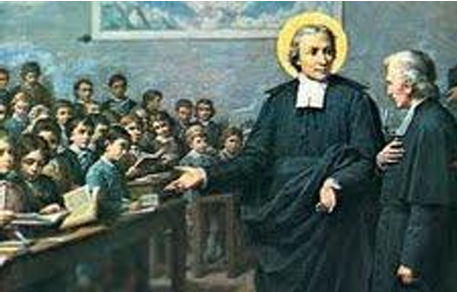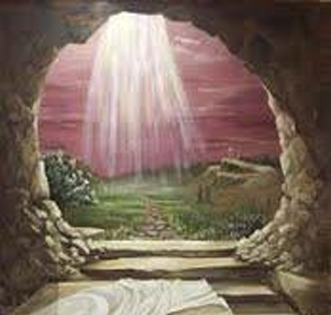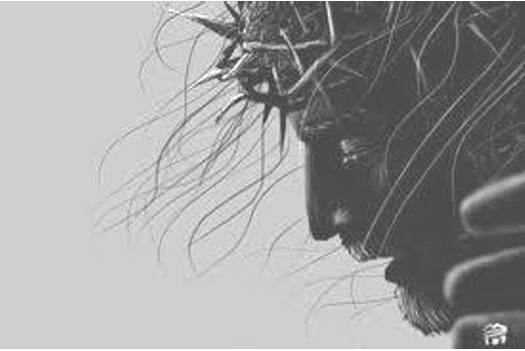|
PLEASE PRAY FOR THE FOLLOWING INTENTIONS
WHAT’S
HAPPNING
|
|||||||||
|
SAINT
FOR APRIL Priest, Educator (1651-1719) April 7th |
 |
|
All men of whatever race, condition or age, in virtue of their dignity as
human persons, have an inalienable right to education.
(from the Vatican II document, “Declaration on Christian Education”, n. 1)
St. John Baptist de la Salle came from a noble and wealthy French family. Scholarly and refined, John was also devout and began studies for the priesthood in his teens. He was ordained at age 27 and appointed canon at the Cathedral at Rheims. While in Rheims he met a layman, Adrian Nyel, who had come there to open a school for boys. John encouraged him and personally took an interest in the work. John’s interest turned to dedication. He founded the Brothers of the Christian Schools (Christian Brothers). John’s energy and resources went into educating the poor and also the delinquent children of the wealthy. His generosity and perseverance enabled him to overcome disappointments and opposition. He instituted new practices such as class instruction rather than individual instruction, silence and order, and teaching in the vernacular (French) rather than Latin. Toward the end of John’s life he was afflicted with asthma and rheumatism, yet he insisted on continuing to work in the classroom. He died on Good Friday, April 7th, 1719. He was canonized in 1900, and in 1950 Pope Pius XII declared him patron of all school teachers. (Source: IN HIS LIKENESS by Rev. Charles E. Yost, SCJ, STL and SAINT OF THE DAY, Leonard Foley, O.F.M., Editor) | |
|
|
A THOUGHT FROM THE CATECHISM |
#647 O truly blessed Night, sings the Exsultet of the Easter Vigil, which alone deserved to know the time and the hour when Christ rose from the realm of the dead! But no one was an eyewitness to Christ’s Resurrection and no evangelist describes it. No one can say how it came about physically. Still less was its innermost essence, his passing over to another life, perceptible to the senses. Although the Resurrection was an historical event that could be verified by the sign of the empty tomb and by the reality of the apostles’ encounters with the risen Christ, still it remains at the very heart of the mystery of faith as something that transcends and surpasses history. This is why the risen Christ does not reveal himself to the world, but to his disciples, “to those who came up with him from Galilee to Jerusalem, who are now his witnesses to the people.”
#648 Christ’s Resurrection is an object of faith in that it is a transcendent intervention of God himself in creation and history. In it the three divine persons act together as one, and manifest their own proper characteristics. The Father’s power “raised up” Christ his son and by doing so perfectly introduced his Son’s humanity, including his body, into the Trinity. Jesus is conclusively revealed as “Son of God in power according to the Spirit of holiness by his Resurrection from the dead.” St. Paul insists on the manifestation of God’s power through the working of the Spirit who gave life to Jesus’ dead humanity and called it to the glorious state of Lordship.
 REFLECTION REFLECTION  |
THE WORD
And the Word became flesh
and made his dwelling among us,
and we saw his glory,
the glory as of the Father’s only Son,
full of grace and truth.
 | In the beginning was the Word, and the Word was with God, and the Word was God. He was in the world, and the world came to be through him, but the world did not know him. He came to what was his own, but his own people did not accept him. |
But to those who did accept him he gave power to become children of God, to
those who believe in his name, who were born not by natural generation, nor by
human choice nor by a man’s decision but of God.
And the Word became flesh
and made his dwelling among us,
and we saw his glory,
the glory as of the Father’s only Son,
full of grace and truth.
John testified to him and cried out, saying, “This was he of whom I said, ‘The one
who is coming after me ranks ahead of me because he existed before me.’ ”
From his fullness we have all received, grace in place of grace, because while the law was given through Moses, grace and truth came through Jesus Christ. No one has ever seen God. The only Son, God, who is at the Father’s side, has revealed him. (John 1: 1, 10-18)
From his fullness we have all received, grace in place of grace, because while the law was given through Moses, grace and truth came through Jesus Christ. No one has ever seen God. The only Son, God, who is at the Father’s side, has revealed him. (John 1: 1, 10-18)

 Lietuvi
Lietuvi

